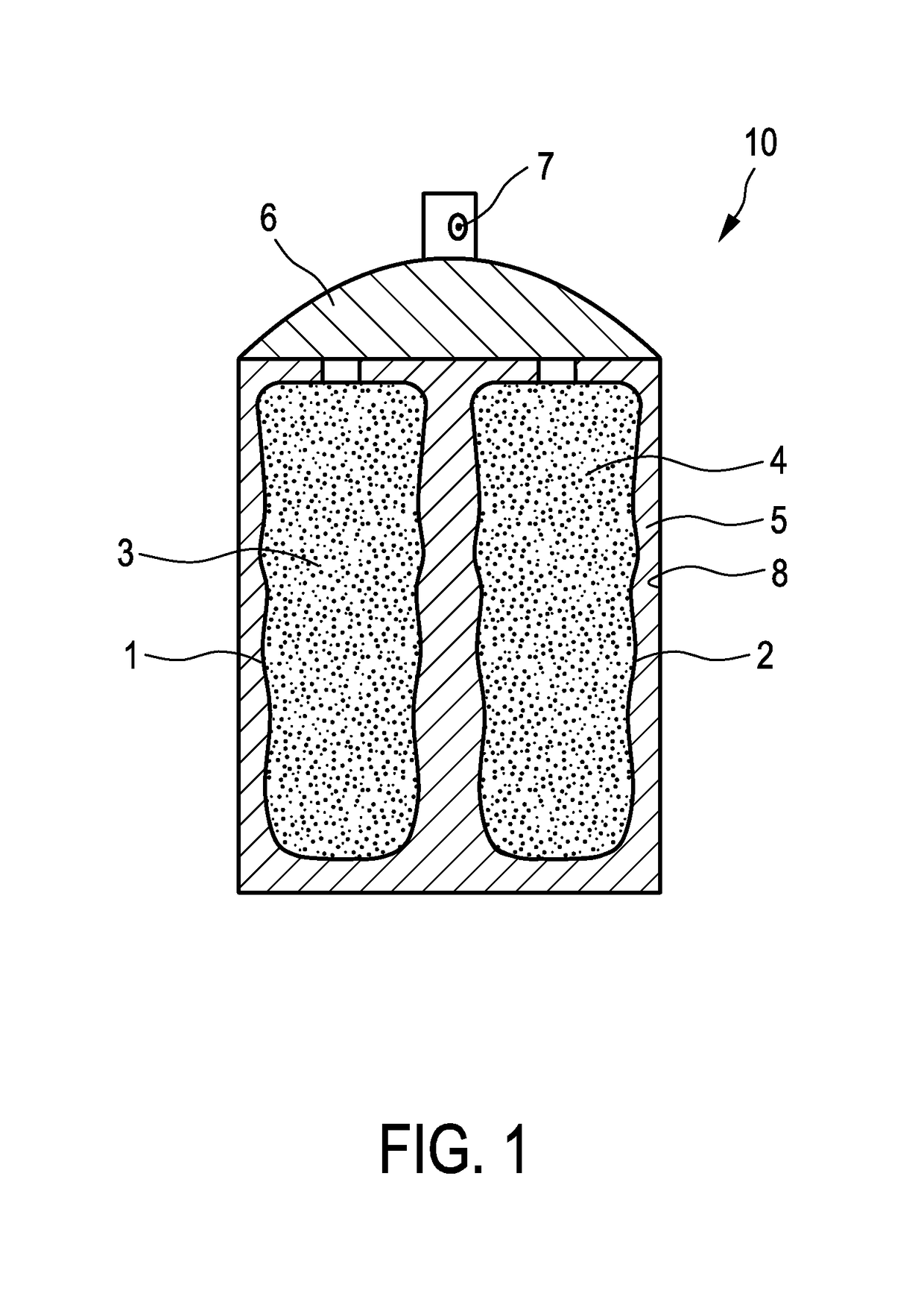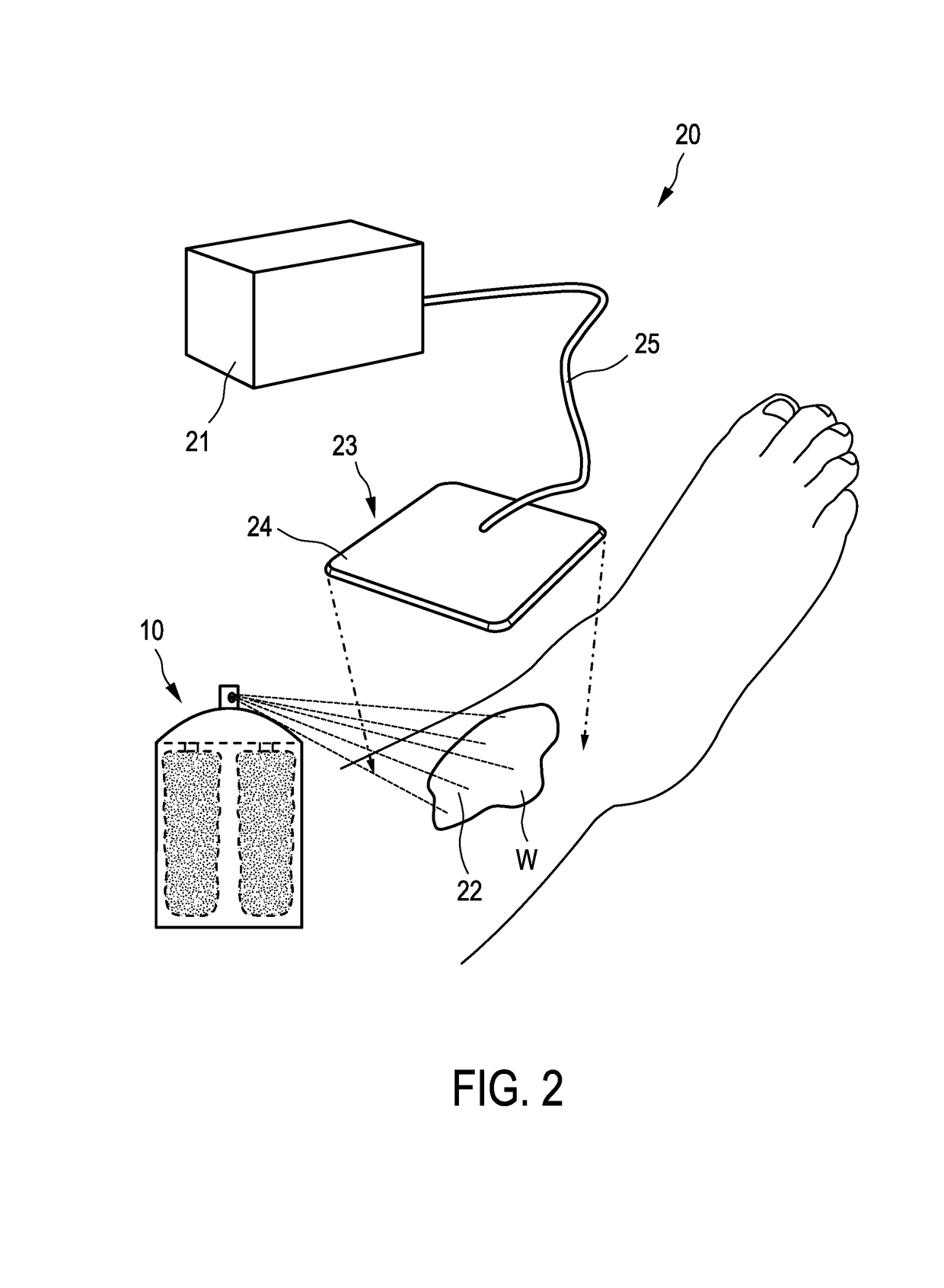Foamed Silicone in Wound Care
a silicone and wound technology, applied in the field of multi-component systems, can solve the problems of difficult control of the overall foaming process, difficult to size and shape the dressing or the pad to fit the wound, and the foaming process is typically relatively slow, so as to minimize the disadvantages
- Summary
- Abstract
- Description
- Claims
- Application Information
AI Technical Summary
Benefits of technology
Problems solved by technology
Method used
Image
Examples
examples
[0130]Method of Preparing a Foam Based on the Multi-Component System According to the Present Invention
[0131]Materials: PLY4-7560 was purchased from NuSil Technology LLC, Catalyst 510 and Crosslinker 110 were purchased from Evonik Hanse GmbH.
[0132]Preparation of two silicone mixtures: Using a mechanical rotary mixer, 908 g PLY4-7560 and 92 g Crosslinker 110 were mixed to a homogeneous mixture in a plastic jar. Using the same equipment, 1910 g PLY4-7560 and 90 g of Catalyst 510 were mixed in a second jar.
[0133]Preparation of a multicomponent foam producing device: 10 g of the first mixture was transferred to a can (transfer can) and mixed with 10% isobutane. The can was subsequently pressurized using nitrogen gas. 20 g of the second mixture was transferred to a second can and mixed with 10% isobutene. The can was subsequently pressurized using nitrogen gas. Using the pressure in both transfer cans, the silicone mixtures from the cans were transferred into two separate containers in a...
PUM
| Property | Measurement | Unit |
|---|---|---|
| density | aaaaa | aaaaa |
| boiling point | aaaaa | aaaaa |
| boiling point | aaaaa | aaaaa |
Abstract
Description
Claims
Application Information
 Login to View More
Login to View More - R&D
- Intellectual Property
- Life Sciences
- Materials
- Tech Scout
- Unparalleled Data Quality
- Higher Quality Content
- 60% Fewer Hallucinations
Browse by: Latest US Patents, China's latest patents, Technical Efficacy Thesaurus, Application Domain, Technology Topic, Popular Technical Reports.
© 2025 PatSnap. All rights reserved.Legal|Privacy policy|Modern Slavery Act Transparency Statement|Sitemap|About US| Contact US: help@patsnap.com



